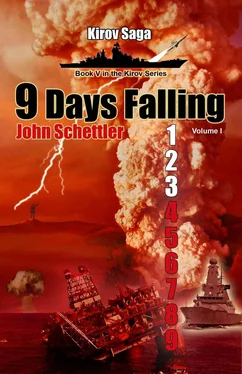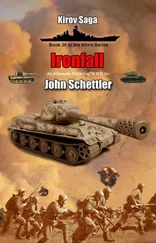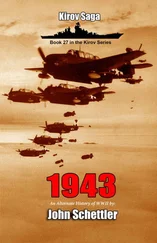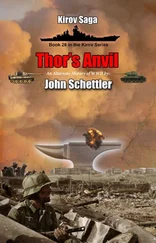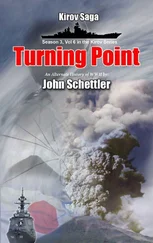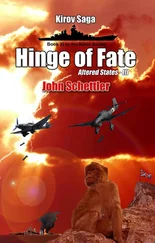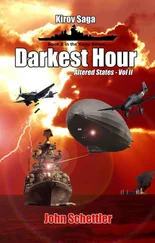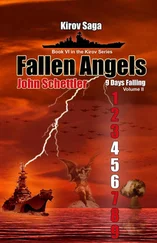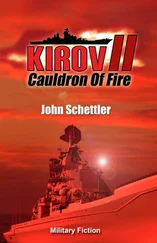“Can we handle them, Mack?” That was all she really wanted to know. “Am I flushing half my company down the tubes here while I watch the other half burn in the Straits of Hormuz?”
“Oh, with Iron Duke along we’ll handle the Black Sea Fleet, m’lady. But the Russian air force is another matter. You’ll be at risk in another four hours. We have a good air defense missile umbrella, one of the best in the world for that matter, but we’ll have no air cover to speak of, unless we can get Turkish support. If the Russians get serious about it they can give us something to shoot at. Our Sampson radar can track a cricket ball flying at Mach 3 and our Sea Vipers are as good as they come. That said, they only need one hit on a tanker to cause serious pain—as we’ve seen with Princess Royal in the Gulf.”
“Very well… Keep your ear to the ground on this for me. I want to know what they tee up before it gets airborne.”
“The Chinese have been taking pot-shots at American satellites, but as far as I know they haven’t hit anything belonging to the Crown yet. I’ll see if I can have them keep a good eye out for us, Madame.”
“I’ll sleep easier, Mack. Thanks.”
Morgan saluted, and made a graceful withdrawal, glad he had not been grilled and fried like the fish he was supposed to have served. That bit about the cold mackerel made the point well enough for him. He couldn’t let the company down again.
Thecommander of Iran’s aerial defense, Brigadier General Ahmed Mighani was not happy. He had been reading all morning, digesting news feeds and official government statements on the ever boiling kettle of the Gulf. The latest was the typical fare, half taunting and half bravado, with a swipe at Israel in the mix: “The Zionist regime lacks the diplomatic, economic and social capability to launch a wide-scale war,” General Yahya Rahim Safavi said in response to threats by Israel to attack Iran's nuclear facilities. “Iran's armed forces, including the Revolutionary Guards, and 11 million members of the Basiji, the Guards voluntary force, “are fully prepared to deal with any attack.”
Yes, he thought. So prepared that I can barely fly half the planes we have in inventory, and have to scavenge equipment that should have been retired twenty years ago. This was followed by a story claiming the US planned to use Georgian military facilities as a beachhead to strike Iran. And at this very moment the Pathfinder , an oceanographic survey ship owned by the US Military Sealift Command, was making its second visit to the Black Sea in the last ten days. The official purpose of the visit was to conduct an underwater survey to ostensibly look for the wreckage of the Armenia , a WWII era Soviet hospital ship sunk by the Germans. Needless to say, that mission was now cancelled.
The curiosity of the Americans knows no bounds, he thought, fully aware that this ship could also monitor Russian submarine activity in the Black Sea at a range out to 60 miles. He continued reading: “ With regard to the United States, Safavi said military assets in the region were deployed in such a way that they actually posed a serious danger to the U.S. itself.”
General Mighani wondered what that was supposed to mean, concluding that all the American assets would, of course, make wonderful targets for Iran’s Shahab IIIs, the medium range ballistic missiles that were the backbone of the country’s real deterrent against any possible attack. The government release continued it’s confident line: “There is no doubt that the Americans, who are still meddling in the Pacific, will not open a second front with a major war in the Middle East,” he said, referring to a possible attack on Iran.”
No doubt, no doubt. That was why the nation was busy this morning conducting an emergency preparedness drill over the next three days. No doubt…
But the cable that had darkened his mood had come suddenly, interrupting his review of the National Air Defense drill. The news about the attack on a British flagged tanker was cause for both elation and regret. It was a dangerous situation that could easily cause him great grief. The British tanker was struck amidships as she entered the Straits of Hormuz. The attack delivered a sharp rebuke to those who have plundered the region for decades, he thought. It also made the obvious point that the oil the West so desperately needed could be choked off at a moment’s notice. But the danger that this attack would be blamed on Iran was very real.
At the moment he had no hard information as to who the perpetrators might be, and did not know the incident had been carefully planned. Special Operations had not bothered to consult with the Air Force for security purposes. He was only told to conduct these silly exercises, but with live ammo load outs.
There was other news as well. An attack on the US embassy in Yemen, beginning with a suicide bomb and followed up by an attempt to storm the embassy in San’ai, had also just crossed the wires. The attacked failed. Good coffee in San’ai, he thought, but bad politics. Could this be part of a new wave of jihadi attacks? It was clear that the Americans would look first to Iran for any potential involvement. He knew the incident would offer them just the pretext they needed to make good their longstanding threats. Already the American light carrier Iwo Jima had put to sea from its berthing at Jebel Ali, and there were alarming signs of increased US naval activity building in the region.
In an official statement to the Iranian press, for general release, he made it clear that Iran would be ready, sounding just like all the other official statements he had been reading that morning. “If Iran is attacked, it will deliver a crushing blow to the enemy…we will surprise the enemy and make them regret their actions.” And now he was sorting through his surprises, realizing that, when it came to fixed wing aircraft in defense of the homeland, he had very little in inventory.
The aging Iranian air force was still holding on to retired legacy systems inherited from the days of the Shah. He had all of 65 F-4 Phantom fighters, and some 60 F-5E Tigers, though he knew the air force would be lucky to get even half of these in the air and keep them there for longer than a few days. Of the 25 old F-14 Tomcats, perhaps 6 were mission capable. Officially he also had 25 more advanced Russian Mig-29s in inventory, but he knew many of these were mere trainers. The one plane he had any faith in, perhaps good for one desperate strike at a given target, would be his strike group of a dozen Sukhoi-25s and the 30 Sukhoi-24s behind them. Half of these had been a surprise gift from Saddam, fleeing to Iran during the first Gulf War. He knew his planes were no match for the superior American made inventories that they would have to face, but some would reach their targets. The rest of his air force was comprised of a few old Chinese J-7 fighters and a couple dozen French made Mirage F-1s, both planes dating to the old cold war era of the mid 1970s.
The only thing he could do with such a force was simply throw it into the wind and hope for the best. The American F-16 and F-15 fighters would destroy the bulk of his force in a matter of hours, not to mention the lethal F-22 Raptors, a new stealth fighter that could not even be seen on the old radars his planes mounted. His only hope was that some of his planes would pose a distraction, while perhaps a few others would manage to unleash a few missiles. Yes, it was in his missile inventories that all hope resided now. He had enough to unleash a storm on the Gulf, and make life there very miserable for a few weeks, perhaps a month at most. The air force would simply buy him a few precious hours time so his liquid and solid fueled missiles could be staged and targeted on key installations in the region that the Americans depended on for their life blood of oil.
Читать дальше
